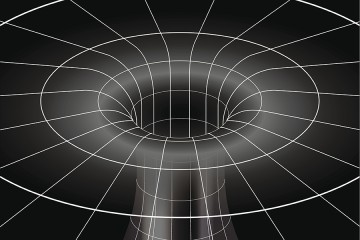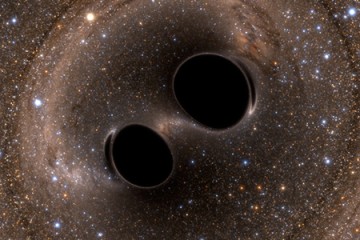A new measurement reported in Nature provides evidence for a new cooling property of dark matter posited by a collection of JHU professors, postdoctoral fellows, and students.
The newly published paper, authored by a group of radio-astronomers at Arizona State University, describes the first measurement of the temperature of intergalactic hydrogen atoms from only 180 million years after the Big Bang.
Surprisingly, that temperature reading is colder than expected in the standard cosmological model. An interpretation paper by a researcher at Tel Aviv University explains that this result can be understood if these hydrogen atoms have some small heat exchange with the abundant dark matter in the universe. If this result is correct, it tells us something new about the physics of dark matter: Not only does dark matter have a gravitational pull that prevents galaxies from flying apart, it also has the ability to absorb heat energy.
The theoretical research that suggested hydrogen might be cooled by dark matter, and thus produce the signal reported in Nature, was conducted at Johns Hopkins University.
The initial paper exploring the possibility of heat exchange between hydrogen and dark matter was authored in 2013 by Marc Kamionkowski, a theoretical physicist in the university's Department of Physics and Astronomy, and two of his collaborators. Two subsequent papers elaborated further this heat exchange and proposed to seek evidence for it in precisely the type of measurements reported in Nature. One of these papers was authored by Joseph Silk, a JHU research professor, and his collaborators; the other paper was written by JHU postdocs Yacine Ali-Haïmoud and Ely Kovetz and a graduate student, Julián Munoz.
"This newly reported result, if confirmed by subsequent measurements, may well turn out to be a Rosetta stone for the nature of dark matter," Kamionkowski said. "I think Joe and his collaborators, and Julian, Ely, and Yacine, deserve significant credit for suggesting these neutral-hydrogen measurements could be used in this way."
Posted in Science+Technology
Tagged physics and astronomy, marc kamionkowski, dark matter









